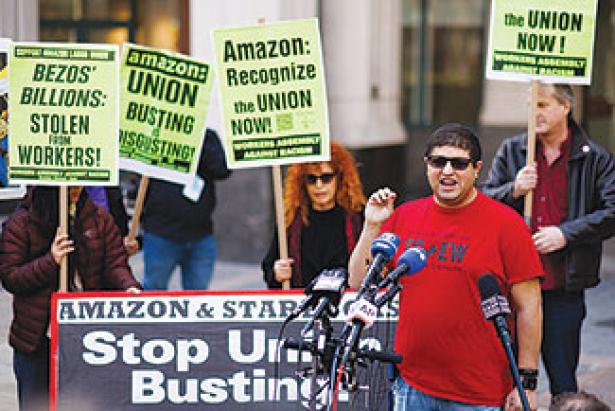labor Unions Added 139,000 Members in 2023, but Union Density Remains Stubbornly Low
Unions added 139,000 more workers in historic gains in 2023, but union density remains stubbornly low, with only 10 percent of American workers represented by a union as of the end of the year, according to the U.S. Department of Labor.
This is an all-time low and a big surprise to many, given the historic strikes by auto workers, Hollywood creatives and Kaiser healthcare workers, according to a Washington Post analysis.
UNION MEMBERSHIP VS. UNION DENSITY
Union density vs. union membership is a frustrating comparison. Even with the historic membership growth, the country added 2.7 million jobs in 2023, many of them non-union, meaning the membership growth couldn’t keep up with the overall jobs numbers. It was also complicated by last year’s drop in public sector union membership, now at 32.5 percent or five times that of private industry.
Part of that might be “the big resignation,” or the number of employees who have retired or resigned from their jobs post-pandemic. When Illinois ratified its new contract with state workers in August, there were approximately 8,000 vacancies in state employee positions that needed to be filled.
Union membership has been dropping since the Bureau of Labor Statistics began collecting data in 1983, according to the Washington Post. At that time about 20 percent of U.S. workers were in a union, which itself was a big drop from the 1950s, when unions represented more than one-third of American workers.
SUPPORT FOR UNIONS AT 71 PERCENT
A more compelling number that bodes well for the future is public support for unions.
Support for unions hit 71 percent in 2023 amid record contract victories and organizing drives that have hit Starbucks, Amazon and other businesses.
For example, 11 Starbucks locations in Missouri have joined Starbucks Workers United in one of the most rapidly growing organizing campaigns in recent history. And over the last year, Amazon workers have been fighting for safer working conditions in local warehouses.
Since their historic Stand-up Strike concluded, United Auto Workers have been organizing at foreign-owned auto plants, with thousands of non-union auto workers wanting to join.
According to a Pew Research study conducted last spring, the majority of adults in the U.S. say that the decline in union representation is somewhat or very bad for the country and for working people.
However, that study also showed a wide partisan difference: more than 75 percent of Democrats and Democratic-leaning independents see the decline of unions as bad for the country. But among Republicans and GOP-leaning independents, only 40-45 percent say the decline is bad for the country or for working people.
THE FACTS ABOUT UNION MEMBERSHIP
Union workers earn about 20 percent higher wages than non-union workers in the same jobs, according to a report the Treasury Department released last August.
Fringe benefits are almost universally better for union workers than non-union workers, including retirement and medical insurance, child care, paid sick leave, subsidized commuting, employee assistance programs and more.
Unions have also been instrumental in closing race and gender gaps, according to the study, with wage gaps between Black and white women significantly reduced.
Today, the Labor Tribune is one of the few remaining labor weekly newspapers in the country. It has a symbiotic relationship with its subscribers: the paper exists because of their continued and unwavering support and the St. Louis/Southern Illinois labor movements are considered among the strongest in America in great part because they have a solid, strong voice that allows their positions to be heard in the general community.


Spread the word